How to Design and Construct a Fish Pond (With Calculations)

In order to grow fish, it is necessary to have a suitable fish pond for better fish production. A fish pond is simply an artificial structure/habitat that meets the necessary requirements for growing fish.
As you read down, you will learn how to design and construct a fish pond from start to finish.
Before we jump to the steps you need to follow, let’s look at the general features of a fish pond.
Features of a Fish Pond
Although there are many kinds of fish ponds, the following are the main features and structures associated with them in general:
- Inlet/outlet pipes or channels; which carry water into/away from the ponds.
- Pond walls or dykes; hold the water in the pond.
- Water controls; control the level of water in the pond, the flow of water through the pond, or both.
- Tracks and roadways along the pond wall; for easy access to the pond.
- Harvesting facilities and other equipment; for the management of water and fish.
Read this article to learn how to Make Money from Fish Farming Opportunities in Africa.
Earthen Fish Pond Construction
A typical earthen fish pond should be about 300m2. Although ponds can be much larger than this, having several small ponds rather than one large one will allow you to harvest fish more often.
The disadvantage of this is that it is more expensive to construct many small ponds than to construct fewer but larger ponds.
Small ponds also waste a lot of space in comparison. Also, very large ponds take a long time to fill and drain and are also difficult to manage.
Generally, the physical attributes of a pond usually have a direct influence on achievable levels of production and returns.
The main physical factors to consider are the land area, water supply, and soil water retention capacity.
Suitable Land Area for Fish Pond Construction
You need to locate your farm in an area that is large enough for your present plans and any future pond expansions.
It will be great if the piece of land also has a gentle slope topography.
It is great because you can just lay your ponds out in a way that takes advantage of existing land contours.
Also, ensure that such an area is not prone to flooding.
Source of Water Supply for the Pond
A good water source will be relatively free of silt, aquatic insects, potential predators, and toxic substances, and it will have a high concentration of dissolved oxygen. The quantity and quality of water in your pond should be adequate to support production throughout the culture period.
The most common water sources can be spring water, seepage water, rainwater or run-off, tidewater (marine ponds), water from boreholes (wells), or water pumped or diverted from a river, lake, or reservoir.
It is generally preferable to use well and spring because they will consistently provide you with high-quality water.
You may like to also read about How to Start Catfish Farming [6 Simple Steps]
Soil Type for Earthen Pond Construction
You need to carry out a simple test to determine the suitability of the soil for pond construction:
First, you need to dampen a handful of soil with water. Make sure you use only enough water to dampen the sample (do not saturate it).
After dampening the soil, squeeze the sample tightly in your hand and then open your hand again to see the result.
If the sample keeps its shape, then it is good enough for building a pond (sufficient clay is present).
If the sample collapses and does not keep its shape, it is not good enough for building a pond (too much sand is present). In this case, you may consider importing clay soil for compacting the pond bottom, sides, and core trench to minimize seepage.
Things to Consider When Designing and Building a Fish Pond
Before designing your fish pond, you must first decide where and how many nurseries, rearing, and stocking ponds that you want to construct.
Also, it is important to know the exact size of the pond, taking all measurements into consideration as this will help you to the number of fish fingerlings needed for stocking.
Consider your water source and ensure that it is able to keep the pond full throughout the culture period.
As a recommendation, you can go for relatively shallow ponds because they are more productive. However, the shallow end should be at least 0.5 m deep to avoid invasion by weeds.
Place screens (or filters) on pond inlet and outlet pipes. This will help to keep out predators, insects, and unwanted fish. Also, it will help to prevent the fish from escaping the pond.
Every pond should be drainable and have inlet and outlet pipes that you can control independently.
Excavation of a core trench should be done where soils are less suitable.
If you are building a super large fish farm, then you need to provide perimeter and feeder roads. This will make it easy for the movement of machines during construction and at harvest.
If you plan to drive on the dykes, build them at least 3 meters wide on top, and wider at the base.
Finally, ensure that you compact the soil on the pond dykes so that it does not collapse in the future.
Read also, What do catfish eat?
PROCEDURE FOR BUILDING AN EARTHEN FISH POND
Follow these six (6) simple steps to build your own earthen pond.
STEP 1: PREPARE THE SITE:
Clear all vegetation around the spot for the pond and move the trash far away from the pond location. The reason is that you don’t want to use soil that has plants in it to construct the pond dykes.
After that, remove the topsoil from the site.
In hilly areas, try to measure the slope of the land with a level or stick to find the best suitable site and orientation for the pond.
Measure and stake out the length and width of the pond.
STEP 2: PEG OUT THE POND AREA:
After measuring the pond length and width, use pegs to mark out the pond area.
Decide on the dyke slope and width and determine core trenches pegging.
The pond dykes should be about 0.5m above the water level (also called ‘freeboard’), to prevent the fish from jumping out.
As a recommendation, make your pond dykes have a gentle slope of about 2:1. This makes them strong and prevents them from undercutting and collapsing into the pond.
However, this ratio depends on the size of the pond. Larger ponds need to have a gentler slope.
STEP 3: CONSTRUCT CLAY CORES:
A clay core is a foundation for the pond dyke which makes it strong and prevents water leaks.
If you suspect the dyke or pond bottom soil to be highly permeable, dig a core trench, in the same way as you would dig the foundation for a house, under the dykes around the pond.
Pack the core trenches with impermeable clay and compact it well.
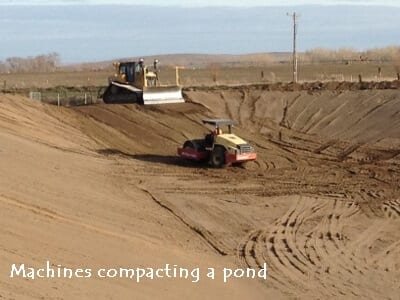
STEP 4: EXCAVATE THE POND AND CONSTRUCT DYKES:
Decide the depth of the pond and begin the digging process.
Use the excavated soil to build the pond dykes. Do this gradually, and compact each layer of soil added to the dyke before the next layer.
Try not to use sandy/rocky soil or soil that contain roots, grasses, sticks, or leaves. These will decay later and leave a weak spot in the dyke through which water can leak out
Once the dyke is constructed, it is better to plant grass on it. The grassroots help to hold the wall together and prevent erosion of the soil.
If you have the resources, then you can go for stone-pitched dykes. By using concrete blocks, stones, or bricks the earthen dykes will be protected more permanently from crab or rat holes.
Also read about How to Start a Catfish Processing and Packaging Business.
STEP 5: INSTALL DRAINAGE SYSTEM:
The essence of the drainage system is to empty the pond when there is a need to change the pond water or harvest fish.
It consists of the outlet system for letting water out of the pond and the drainage ditches which carry the water away from the pond.
The best and easiest way to have a good drainage system is to build the pond in a place that provides a good slope.
The drainage system must be built before the pond dyke because some drainage devices go through the walls.
One of the easiest ways to drain the pond is to place a bamboo or plastic (PVC) pipe through the base of the wall into the deepest part of the pond.
An overflow pipe can be installed at an angle into the pond. This should be used only in emergencies. During heavy rains, the overflow pipe takes excess rainwater and runoff water out of the pond.
The end of the pipe, which is inside the pond, should have a screen over it to keep fish from entering the pipe. The other end of the pipe is plugged with wood or clay or it can be fitted with a tap head. To drain the pond during harvest time, the plug is pulled out.
Install the intake of the drain pipe underwater. This will prevent the screen from clogging with debris that may be floating on the pond surface.
The use of pumps and siphon are other methods of draining water from the pond.
STEP 6: INSTALL WATER INLET PIPE:
All ponds, except for those filled directly by a spring or by rainwater, need water inlets.
If your water source is a river or stream, use filters (screens) to cover the inlet pipes so that unwanted fish and other materials do not enter the pond.
A water inlet can be as simple as a bamboo/plastic pipe of good diameter running from a water source through the wall into the pond.
The inlet pipe should be placed about 0.15m above the water level so that the incoming water splashes down into the pond.
This helps to mix air (thereby introducing oxygen) into the water. It also prevents fish from escaping by swimming into the inlet pipe.

Materials for Making Screens for the Pond Inlet and Outlet Pipes
- If the water is muddy or has plenty of leaves or grass in it, then a wire mesh screen is better.
- A nylon mesh bag will work if the water source is free from organic material.
- If the water contains unwanted fish and more organic matter, sand and gravel filters are best. it is more effective and economical.
- A clay pot with holes punched in it can also be used for screening.
- You can use a loosely woven grass mat as good screen material.
Don’t fail to also read about these Best Health Management Tips For Fish Farming Business.
How To Calculate Pond Size For 1000 Adult Catfish
To house 1000 mature catfish in a pond, use a pond with 5m length, 3m width and 1.5m depth.
This dimension is enough to hold about 10,000-12,000 litres of water which is the amount of water you need to keep 1000 catfish in a pond. You need about 10-12 litres of water for each fish.
*** Note that this is a rectangular pond and the dimension may be different for other shapes.
Now, let’s do the maths…
Length – 5m
Width – 3m
Depth – 1.5m
First we need to calculate the volume of the pond if we fill it with water to the brim.
Volume = length x width x depth
Volume of pond = 5 x 3 x 1.5 =18m3
Convert the volume to litres by multiplying it by 1000.
Pond in litres = 18 x 1000 = 18,000 litres
Now, let’s say you fill the pond with water to 2/3 of it’s total volume.
That means, the volume of water in the pond is 18,000 x 2/3 = 12,000 litres (equivalent to the volume of water we need for 1,000 fishes)
Mind you, this calculation is for 1000 catfish at maturity.
Now, let’s do some calculations for pond sizes for fingerlings.
Pond Sizes For Fingerlings and juveniles
Each fingerling needs about 4-5 litres of water in the pond.
So, if you have;
1,000 litres pond: This will hold about about 200-250 fingerlings. As the fish grow bigger, you need to sort them and continue to reduce their number in the pond. At maturity, you should have about 80-100 catfish in the pond. Ensure that you don’t overstock your ponds so that it does not lead to stunted growth.
2000 litres pond: This will contain 400-500 fingerlings. If you are growing them to table size, then you will have about 160-200 fish in the pond. This will provide enough room for the fish to grow.
5000 litres pond: This pond will take up to 1000-1250 fingerlings. However, you must continue to sort them as they grow to table size. Remember that stunted growth is real and the health of your fish is also very important.
Conclusion
In conclusion, a pond must be able to hold water and sustain favorable conditions for fish production.
The pond should allow you to perform your managerial duties (such as harvesting and feeding) effectively, with relative ease and safety.
Also, you must consider the size of the pond as it directly affects the growth of the fish. If it is to small, then it may result to the stunted growth of the fish.
Generally, poorly constructed ponds will result in poor fish production yields and sales returns.
This is because you may need additional management efforts and extra costs to achieve comparable yields.
Hence, paying attention to pond design and construction detail is the first step to successful pond production.
We love to hear from you, please leave a comment.
References:
- FAO – FISH POND CONSTRUCTION
- Marywil Farms: Pond Size For 1000 Catfish: Calculation Made Easy
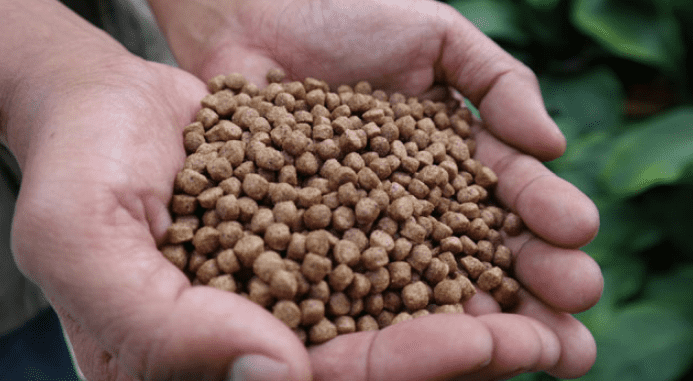
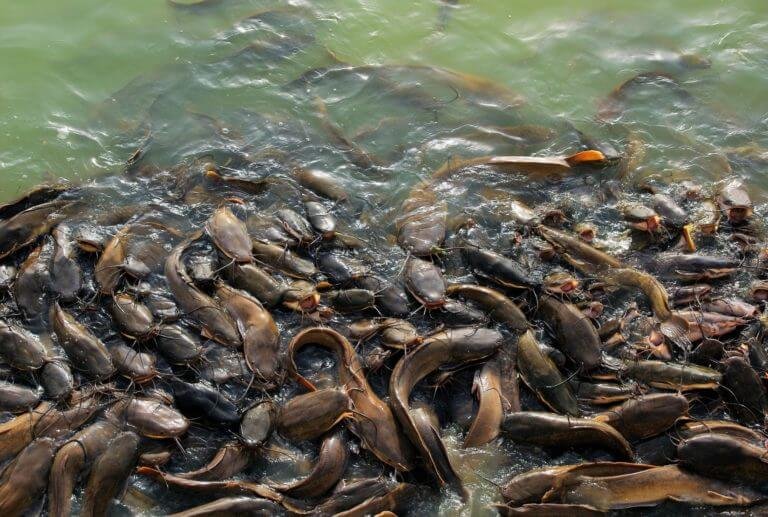


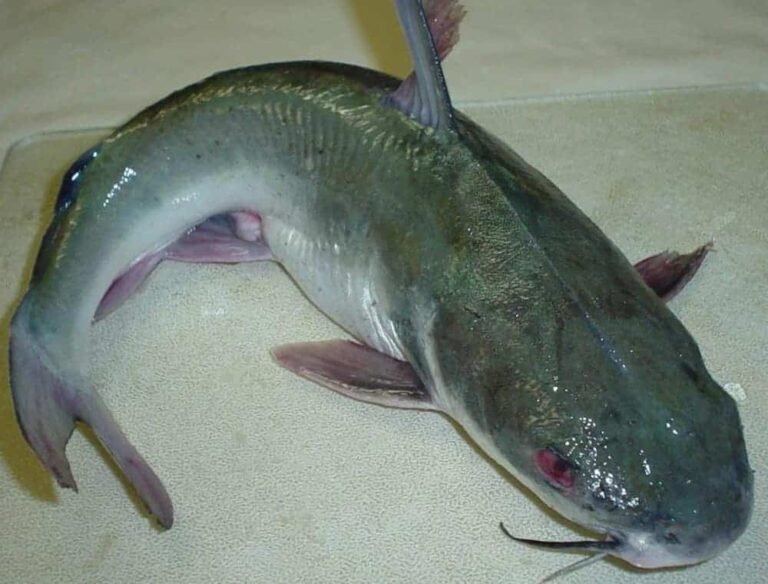
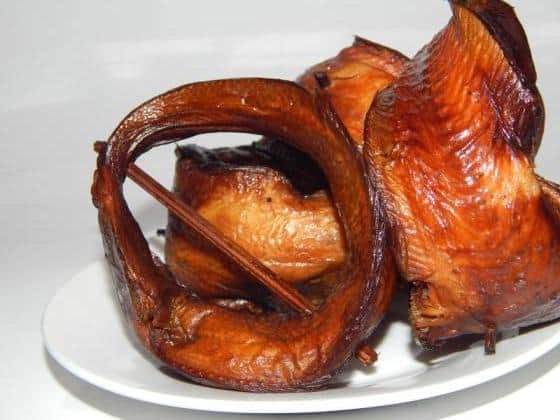
This is absolutely phenomenal. Thanks for the details. How do I write a project for Fish Farming requiring 5 ponds with 10000 each? Looking forward to hearing from you.
Do you mean a business plan for fish farming?
Wow so you’re at least lacking the least you’re probably going there. All we have is knowledge about aquaculture and capture fisheries but lacking money to begin the project. That’s according to me!
Thanks so much i have liked the article as i look forward to joining the project.
Awesome. I wish you well.
Really appreciate tour write up.
Greetings from Papua New Guinea ( PNG).
My Name Is Mr. Samson Muli . I hace great eager to farm fish mostly for comercial purposes .
The targeted area for fishpond is in the midst of mountain.The area Is very cold . And there Is creek flowing which never runs dry even in times of dry season .
My government is ready to fund this project . i would very much need your valuable ideas going forward.
Sasmon MULI
You are welcome to use the information we share on this platform at any time and good luck on your fish farm project.
Dear adimin
Im asking how deep should be the pond and can a bowhoe sustain the 30×20 x10 ponds
Kindly help me as my wasp number is +260772055717
Hello dears
I really have passion for fish farming. I have already secured enough land for the project. But I am lacking of the technical knowledge.so you technical support support will greatly
bring improvement to hundreds of people.wising to hearing from you as soon as possible.
Thanks
Musa m kenneh
Stay tuned, Musa.
Are there other types of fish that can be farmed other than catfish?
Sure, there are other types of fish that can be farmed and each of them requires some level of expertise to care for them.
You can also farm tilapia
Sure, that’s possible.
A lot of copywriting issues here. Change your content before I sue you.
Send screenshot of the issues to [email protected].
Added knowledge.our water source is seasonal flood harvested in a reservoir. It challenges in dry spells to maintain water quality. But much interested in fish farming. Thanks
That’s a smart move for saving water. Kudo.
Your research is very excellent please add me to any WhatsApp group that related Agriculture 07082566329
i like this lesson, am going to make use of it!
Fantastic!! I love your intention to apply what you have learned. That’s great!
great info there
You are welcome.
Thanks a lot for this informative write up. The content is easy to comprehend and the descriptions are simple to implement. God bless.
You’re welcome, Sadisu.
Thanks so much for the write-up may God Almighty increase you in knowledge….
Thanks, Ahmed
Thanks a lot for your selflessness in this post, more strength to your elbow.
Thank you
hello this is very helpful as i am planning to venture into aqua farming, now at my farm i have no water i depend on well or should i erect a borehole for the pond and the land flat what can i do
Fish farming requires a lot of water. So, if you already have a well that does not dry out easily, you may just install a surface water pump to draw water into your pond. Otherwise, you should go-ahead to drill a borehole.
Wonderful information that will make my wish come true.
Will keep visiting your site for more information as I journey through my ‘wish-come-true’ path.
God bless you all.
You are welcome, John.
I pray your wish comes true.
This is so wonderful . I am very happy I came to this site on the web. Thank you so much for this information. Iwishtofindoutmoreifposibleyoucouldhelpme,which species of fish could be the best for rearing(for comercial purpose) ?
Oh great, Tango! I’m excited to know that you find this article very helpful to start fish farming.
As for you question about the best specie of fish you should tear for commercial purpose…
That decision largely depends on your market research.
I could go ahead and tell you that Catfish farming is very viable in Nigeria, but I don’t know your current location.
What you should do is to do a little market survey to know what fish to rear for commercial purpose.
Cheers!
Love this presentation, very clear and in simple English.
With this i can guide my thoughts and continue my search and teachings.
a nice write up.
please are there other means or facility for housing fish aside from the one stated above.
probably, an alternative for small scale.
You can use a drum or a large basin with good depth.
This is very very educative. keep it up our Professor. But then How often do you have drain pond water?
Thanks for your reply Jesen.
In response to your question, your pond should be cleaned as often a possible to prevent build up of ammonia in the water.
powerful, how much can it cost to construct a single pond 300 squares.
Thanks for your reply.
I will advice you visit a professional close to you to get the correct cost implication. The cost is negotiable and one can not say there is a fixed figure for constructing a fish pond.
Thank you.
how do you drain water from earthen ponds that uses ground water..some land areas are shallow.
Ground water, do you mean water filling the pond from underground?
If that is the case, please use a screened over flow pipe (fitted near the top of the pond dyke) to channel excess water out of the pond.
Very detailed and helpful article.
This is wonderful and very educational.
nice write up, please can i have your contact pls..
Its hard to find knowledgeable people on this topic, but you sound like you know what youre talking about! Thanks
It’s nearly impossible to find knowledgeable people on this topic, however, you sound like you know what you’re talking about!
Thanks
You’re welcome buddy!!
Love the post
Thank you Agetu Dennis for your kind feedback.
Thanks very beneficial. Will certainly share website with my buddies.
Hello Saluscorporate,
Thank you for your kind feedback.
You’re welcome to share website with friends.
It’s remarkable to pay a visit this web page and reading the views of all friends about this paragraph, while I am also eager of getting knowledge.
Thank you Online Learning
I appreciate you for taking the time to give us feedback.
visited your site… Thumbs up! you’re doing good.
hi!,I really like your writing so a lot!
I’m glad you do.